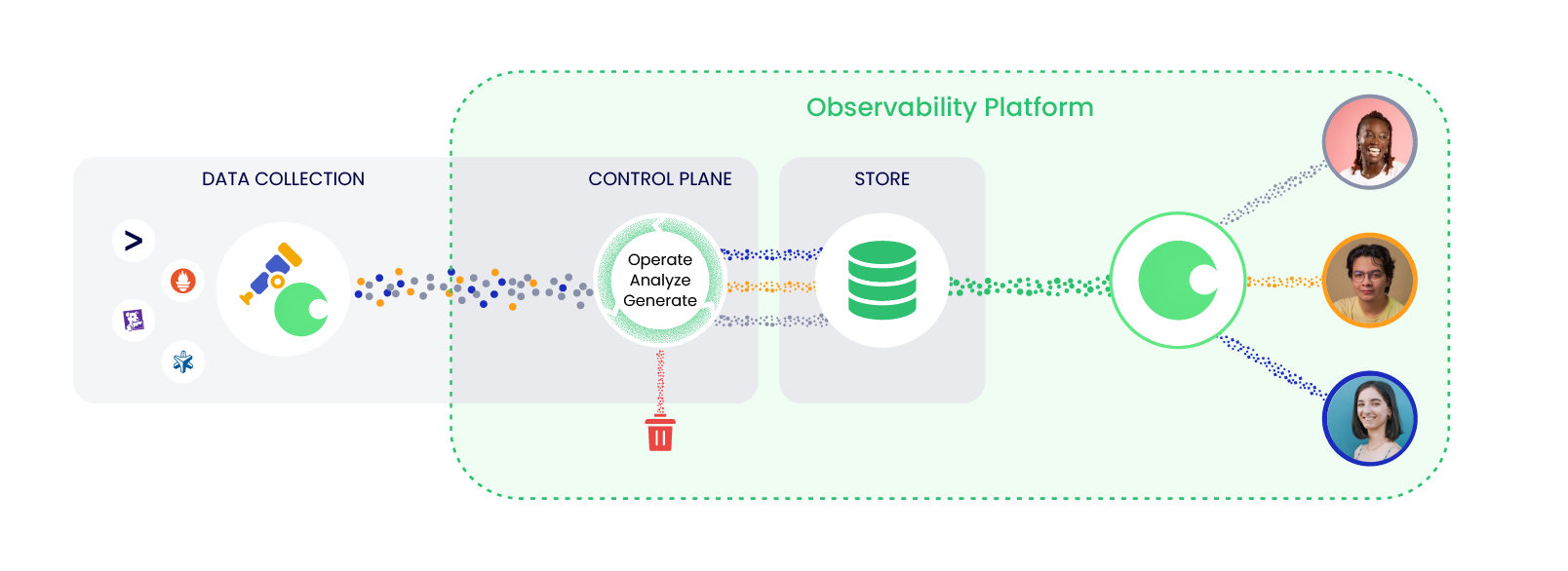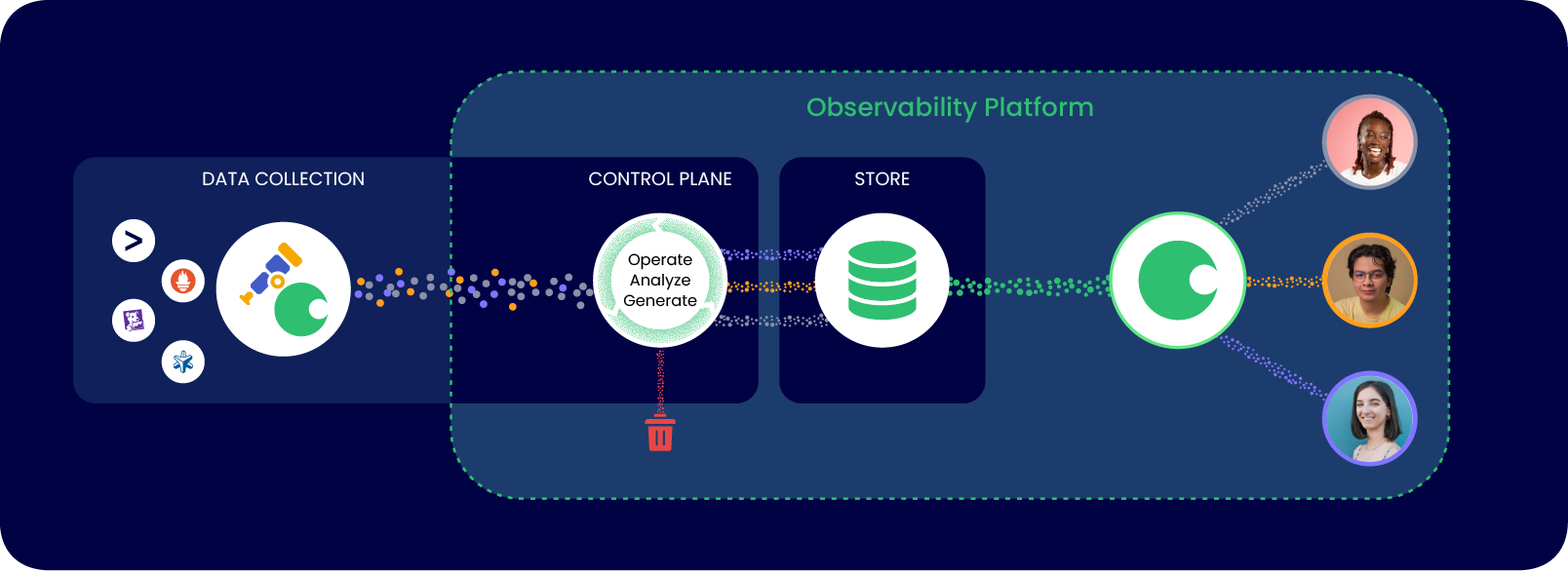- Learn about the data types that Observability Platform supports, and the tools you can use to manage that data.
- Explore the concepts unique to Observability Platform, such as the Control Plane, Chronosphere Lens, and how monitors and dashboards operate.
- Skip the overview and get started with using Observability Platform.

